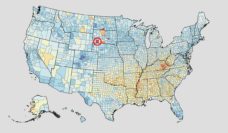In 2016, colleagues, Douglas Phillips and Eva L. Siegel, and I published a study in the International Journal of Environmental Research and Public Health examining factors that contribute to stress in low-income households. Chronic stress is responsible for negative physical and mental health outcomes and can be linked to larger issues, such as poor-quality housing conditions. One such issue—energy insecurity—or, “an inability to adequately meet household energy needs” can result in unpaid energy bills or living in a home that is too hot or cold. According to the US Department of Energy, one-third of US households are unable to adequately meet basic household energy needs. Our study, which consisted of both interviews and surveys with 20 low-income residents of the South Bronx in New York City, inquired about experiences with energy insecurity, stress levels, health, and household finances. Using a mixed-methods design and exploratory analytical approach, we found that energy insecurity contributes to chronic stress.
Our results point to a “housing and household energy pathway to stress.” The pathway is anchored in a “trifecta of insecurity,” physical, economic, and health challenges, that lead to higher perceived stress. Poor quality housing was directly and indirectly associated with stress and the resulting uncomfortable living conditions leaving participants concerned about their health and safety. These deficiencies led to the use of secondary heating equipment, which drove up expenses and further exacerbated stress levels.
Poor quality housing was directly and indirectly associated with stress and the resulting uncomfortable living conditions leaving participants concerned about their health and safety.
Poor quality housing can be addressed through policy and programmatic efforts. The Weatherization Assistance Program, for example, can address structural deficiencies to improve home energy efficiency. But this can only happen if funding is made available, scaled and sustained at the federal, state and local level. Additionally, landlords, property owners and building managers can invest in building improvements related to energy efficiency that promote the well-being of residents, while raising property values and decreasing energy expenses. At the federal level, the Department of Housing and Urban Development (HUD), has previously and successfully worked with researchers to address health hazards, such as lead, in homes. This same partnership model could be applied to developing energy efficiency interventions in homes throughout the United States
The proposed initiatives, when funded and supported, can make a significant difference in the lives of residents, while at the same time, improving tenant-landlord relationships. The key is to address health where the day starts and ends: at home.
Feature image: JBrazito, DC Snow, 12/19/09 used under CC BY-NC 2.0














